4 environmental options for arable growers in switch to ELMs
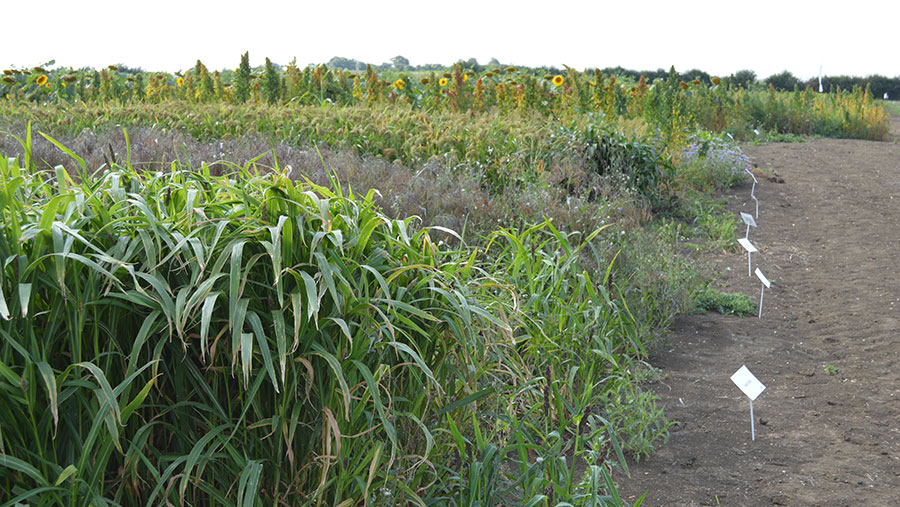 © MAG/David Jones
© MAG/David Jones Arable growers are being encouraged to try out current stewardship options to ready themselves for the switch from direct subsidies to environmentally focus payments.
With direct support from the Basic Payment Scheme (BPS) dropping to 50% of current levels in 2024, growers are being urged to prepare for the replacement Environmental Land Management scheme (ELMs).
Matt England, environmental specialist with agronomy group Hutchinsons, who also farms in Cambridgeshire, highlighted four schemes that might suit arable growers from the many on offer.
See also: How OSR establishment risk-share schemes compare
He demonstrated these Countryside Stewardship (CS) schemes – paying between £309/ha and £640/ha a year – in an environmental trials programme organised by the agronomy company on his family farm, PF England & Son, near Warboys.
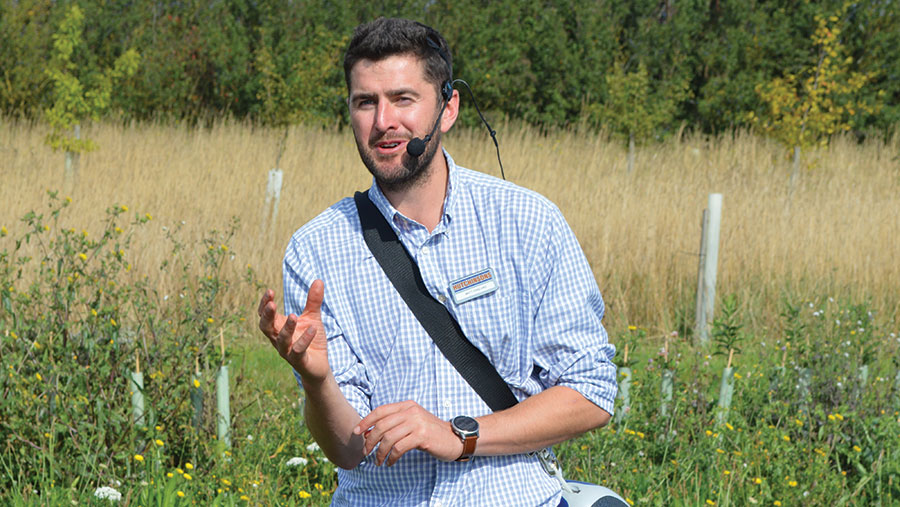
Matt England © MAG/David Jones
The 180ha farm is split roughly 50-50 between fenland and heavy clay-based soils, growing cereals and sugar beet, and also renting out land to grow vining peas, onions and potatoes.
The farm is part of a mid-tier CS scheme on its heavy land, which puts 10% into stewardship options, while the fen farm is going into a Sustainable Farming Incentive (SFI) pilot scheme this autumn.
The SFI is the first tier of a three-tier ELMs programme, which will pay growers for good soil care and land management.
Mr England’s four highlighted schemes were prepared by ploughing, pressing, cultivating and rolling.The first three were drilled on 5 May, and the final winter bird feed mix area on 31 May.
AB8: Flower-rich margins and plots
- Payment £539/ha
- Seed cost Budget mix: £120/ha, premium mix: £230/ha
These flower-rich areas will provide important habitat and foraging sites for wild pollinators such as bumblebees, solitary bees, butterflies and hoverflies, and also farmland birds such as yellowhammers.
Once established, the crop will flower throughout the summer to provide a supply of pollen and nectar. In the late summer/autumn, cutting or grazing the majority of the ground will allow new growth in the spring.
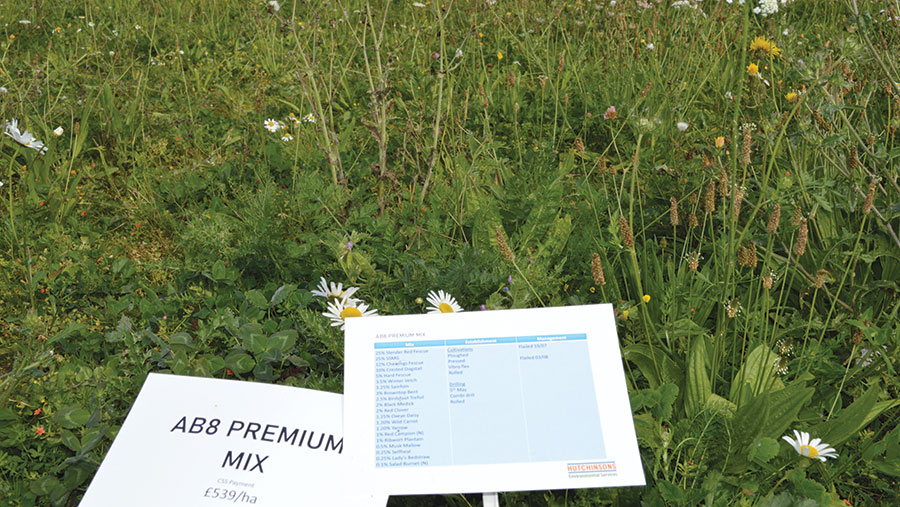
© MAG/David Jones
Mr England says this crop established well on his robust heavy land this spring, and he suggests light land growers should drill only when rain is forecast to get the crop off to a good start.
This scheme can be used on poorer areas of the farm that growers might not be keen to farm, and can last for more than five years.
He says the budget mix contains only 4% of wild flower seed and may burn out after about year four, but the premium mix with 14% wild flower seed and a more diverse mix should improve with age, and so last longer.
GS4: Legume- and herb-rich swards
- Payment £309/ha
- Seed cost £180/ha
This mix should produce a vigorous sward with a range of legumes and herbs suitable for cattle and sheep grazing. It will also provide habitat and food for pollinators and improve soil structure.

© MAG/David Jones
This option does not allow the use of nitrogen fertiliser, which contributes to climate change, so it may be slower to grow in the spring compared with nitrogen-fertilised grassland.
The crop needs to be left for a period of time to flower, but can otherwise be grazed, and the clover content can improve from the second year onwards.
“This is a good option for those with livestock on the farm,” says Mr England.
AB15: Two-year sown legume
- Payment £522/ha
- Seed cost Standard: £100/ha, with ryegrass: £160/ha
This mix provides food for pollinators and farmland birds, and as this is effectively a two-year fallow it can help reduce blackgrass populations.
This crop can not be grazed or conserved, so its main advantage is to improve soil structure. Some experts suggest it may be of limited use in controlling bad blackgrass populations.
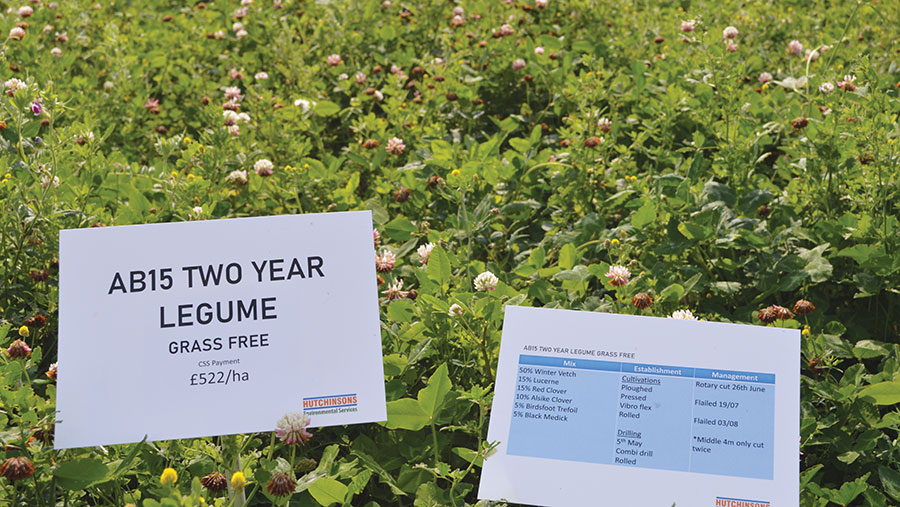
© MAG/David Jones
“I see this as a break to help the soil rather than to control blackgrass,” says Mr England. The mix with ryegrass is offered to try to help suppress blackgrass, but in low- or no blackgrass situations the standard mix should suffice.
If this mix is used, Mr England suggests that nitrogen fertiliser savings of 60-70kg/ha could be made on a succeeding crop of winter wheat.
AB9: Winter bird food
- Payment £640/ha
- Seed cost £100/ha
The mix provides vital small-seeded food for farmland birds, especially in the autumn and winter, while the flowering plants will benefit a number of insects, such as bumblebees and butterflies.
This crop clearly comes out top of the four schemes in terms of payments, and this can be increased to £956/ha if adding in AB12 winter feeding of birds.
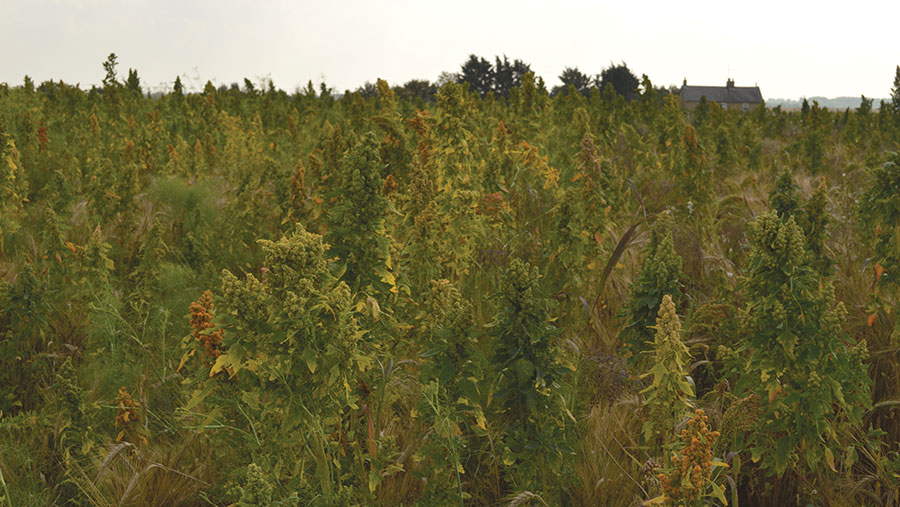
© MAG/David Jones
Mr England says although this option gives the highest gross margin, it is only for two years and can be more difficult to manage than other options.
The AB12 Supplementary winter feeding for farmland birds scheme can only be claimed if AB9 has been included. AB12 pays £632/t of bird food feed for every 2ha of AB9 Winter bird food claimed. This, in effect, adds £316/ha to AB12, pushing the total up to £956/ha.
Matt England was speaking at a Hutchinsons environmental trials day held earlier this month on his family farm near Warboys, Cambridgeshire.

